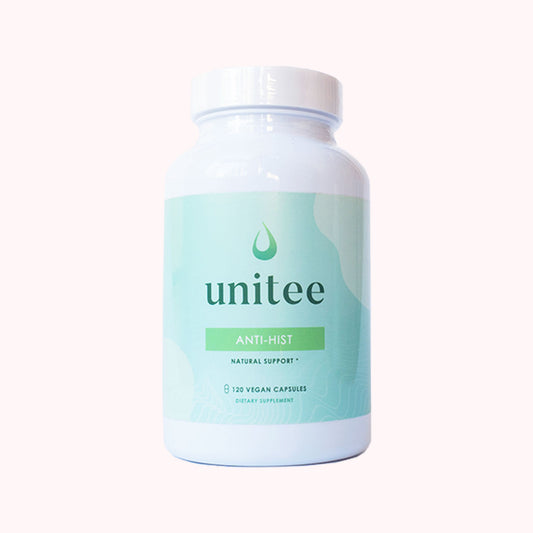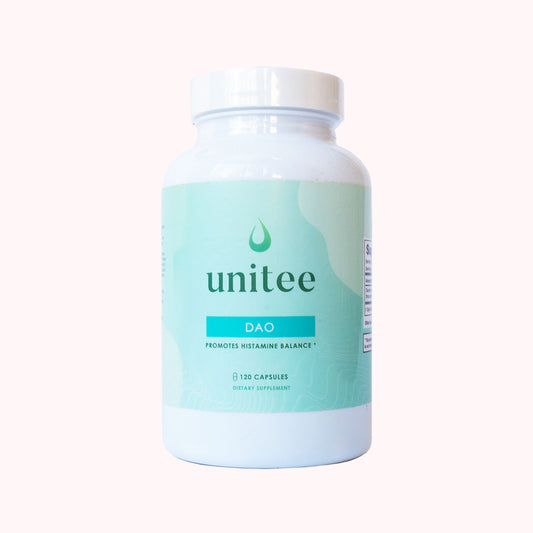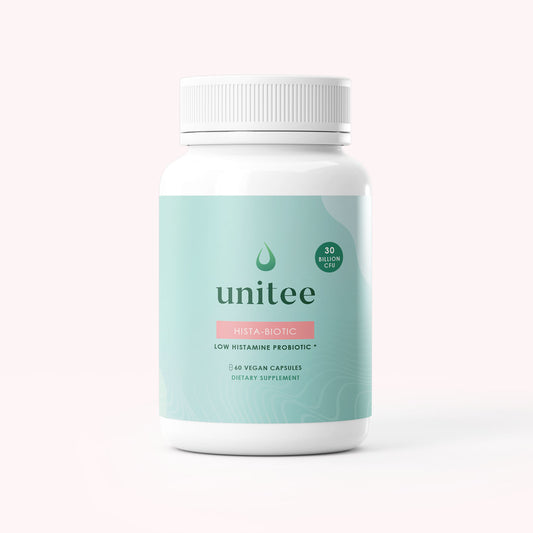I love a good stir fry recipe - it's a super easy way to get in loads of nutritious, natural foods while still feeling like a delicious treat. Of course, when you're histamine intolerant, you've gotta make sure you're focusing on low histamine vegetables and sauces!
One of the best things about a stir fry is the sweet and salty sauce… but alas, you’ve probably stayed away from your favourite stir fry for the past while as you’ve been following a low histamine diet. You know all too well that the main ingredients such as soy sauce, miso paste and anything fermented or gluten-containing is a no-no if you’re trying to get your histamine levels down.
Well, I have some good - no, great news for you! You can still make a delicious stir fry, even if you’re trying to maintain your low histamine eating plan. Today, I'm going to show you step by step, just how easy it is to make a veggie-packed meal, with a thick, creamy, sweet and sour sauce that is so full of flavour you’re likely going to want to eat it every single day. And we say, why not!? It’s that good, and good for you to boot.
Before we get into the recipe, let’s talk about why the ingredients you’ll be using are top class for health, especially when you’re restricting a fair range of foods on this low histamine diet. You’ll see below just how easy it is to include a wide range of nutrients into a single yet flavourful meal.
The Science Behind Our Low Histamine Ingredients
Olive oil is a great source of healthy fat, anti-inflammatory properties and health boosting benefits (1). While there’s much controversy online about its use in high heat cooking, rest assured you can use it safely in this recipe.
Additionally, olive oil has shown to increase diamine oxidase enzymes, which are responsible for degrading histamine, in order to improve symptoms.
Cabbage, bokchoy and broccoli are all low-histamine vegetables that fall into the brassica vegetables group. These vegetables are packed full of liver-supporting nutrients as well as an array of green and purple compounds that provide anti-inflammatory and antioxidant effects (2).
Your onion is a great source of quercetin, which is a compound you’ve likely heard much about (3). It’s one of the natural antihistamines we advocate to use in any form while following this eating plan. While red and yellow onions contain the most quercetin, they may cause upset if you’re struggling with histamine or other food intolerances. It’s why we include white onions instead, as we find them to be well tolerated, particularly when they’re thoroughly cooked.
In the sauce, we’re including anti-inflammatory turmeric and ginger to round off the nutritional benefits of this superbly flavourful dish. Additionally, the cooked garlic in this recipe means you’re benefiting from its anti-inflammatory, liver supporting and anti-microbial properties.
Lastly, we include macadamia nuts in the sauce. Now, before you panic, as we do eliminate nuts and seeds early in the low histamine diet, keep in mind that macadamia are the least reactive and lowest histamine of all the nuts and can typically be reintroduced quite quickly without causing histamine intolerance symptoms.
Many of you may have already introduced them, but if not you can swap for coconut butter instead as coconut is safe even from the initial phases of the diet before any reintroductions.
For a better understanding of the low histamine diet as well as how to reintroduce foods, download the free low histamine diet guide which will give you all of the tools that may not be clear from a foods list alone.
Low Histamine Stir Fry Recipe with Low Histamine Sauce
Stir Fry Ingredients (serves 4):
- 1-2 tablespoons extra virgin olive oil
- 3 skinless and boneless chicken breasts cut into cubes
- 2 cup of red cabbage, thinly sliced
- 2 cups of bokchoy, roughly chopped
- 1 sweet red pepper, thinly sliced
- 1 cup of broccoli florets, broken into small pieces
- 1 small white onion, finely chopped
Sauce Ingredients:
- ⅔ can of coconut milk, be sure to mix the cream into the milk if it has separated
- 2 tablespoons macadamia nut butter or coconut butter (you can make macadamia nut butter by blending raw macadamia nuts with a little coconut oil: ½ lb macadamia nuts to 2 tablespoons coconut oil and a pinch of salt)
- 2 tablespoons of coconut aminos (if tolerated)
- 1 teaspoon garlic, freshly minced
- 2 teaspoons turmeric powder
- 1 teaspoon raw ginger, finely diced
- ½ teaspoon Himalayan sea salt
- 1 teaspoon maple syrup
For garnishing:
- parsley leaves
For serving:
- ½ cup of cooked rice per serving
Instructions:
- In a pan, heat the olive oil and brown the onion with the chicken until the chicken is no longer pink. Be careful not to brown your chicken for too long or it will become overcooked.
- Add the vegetables and allow to cook, while stirring periodically, until slightly soft but still retaining a little crunch.
- While your chicken and vegetables are cooking, combine the ingredients of the sauce in a mixing bowl.
- Add the sauce to your pan and stir to coat the chicken and vegetables. Cook for just long enough for the sauce to heat up.
- Serve over the cooked rice and top with your chopped parsley.
If you’re eager to mix up the ingredients, take a look at our Master List of low histamine foods. Feel free to try any of the other vegetables in this dish to further the diversity of nutrients in your weekly diet. You’re also welcome to change the base of rice to one of the other well-tolerated grains such as amaranth or millet, or try it with some thin brown rice noodles.
References:
- Basu A, Devaraj S, Jialal I. Dietary factors that promote or retard inflammation. Arterioscler Thromb Vasc Biol. 2006 May;26(5):995-1001.
- Kapusta-Duch J, Kopeć A, Piatkowska E, Borczak B, Leszczyńska T. The beneficial effects of Brassica vegetables on human health. Rocz Panstw Zakl Hig. 2012;63(4):389-95.
- Ko EY, Nile SH, Sharma K, Li GH, Park SW. Effect of different exposed lights on quercetin and quercetin glucoside content in onion (Allium cepa L.). Saudi J Biol Sci. 2015;22(4):398-403.

Anita Tee
My name is Anita Tee. I'm a nutritional scientist specializing in histamine intolerance. I hold a Master of Science in Personalized Nutrition and a Bachelor of Science in Human Biology and Psychology.
For the past ten years, I have used my experience in nutritional and medical health sciences to create a scientifically backed, natural approach to healthcare that relies 100% on evidence-based research.
As I previously suffered from - and overcame - histamine intolerance, my focus is to increase recognition and expand the available resources and protocols available for resolving this particular disorder. To date, I have helped over 4,000 individuals fully resolve or better manage their histamine intolerance symptoms.







